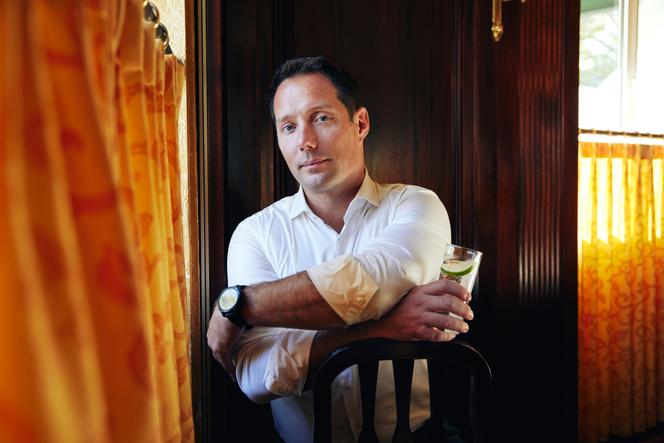


The first thing that strikes you when you see Thomas Pesquet is his athletic physique, with pectoral muscles that could pop the buttons on his impeccably ironed white shirt. We were all familiar with his "ideal son-in-law" looks, ocean-blue eyes and good-natured smile, but we hadn't realized that a large part of the astronaut's job was to maintain a competition-winning figure at all costs. Weak eyes? A cavity? Hearing problems? You're out of the program. This is no laughing matter in the world of astronauts. We suspected as much, but on reading his autobiographical book, Ma Vie Sans Gravité ("My Life Without Gravity," to be published on October 18), there is – contrary to what the title suggests – little room for light-heartedness in the race to the stars.
When we met him at La Closerie des Lilas – a legendary restaurant in the Montparnasse area of Paris – Pesquet ordered a Perrier with a slice of lemon. Normally, the self-described "geographical bachelor" – his partner, Anne, lives and works in Rome for the United Nations Food and Agriculture Organization, while he works in Germany – allows himself to enjoy a drink with colleagues after work. But this morning, he only had time to run eight kilometers, so alcohol was out of the question. He politely asked the waiter for a table away from prying eyes. Not that he minds signing autographs, but it now happens often enough that he knows it could take all evening. He had come from Cologne, where he still works for the European Space Agency (ESA). Because Pesquet, 45, is not content with being the first Frenchman to have already been selected for two missions (Soyuz and SpaceX), totaling 396 days, 11 hours and 34 minutes in orbit: he's training hard to secure a third. A madman.
When you read and hear about it from him, frankly, space adventure doesn't sound very appealing. Between his selection in 2009 and his 2016 lift-off from the Baikonur Cosmodrome (Kazakhstan), the young Pesquet, an aeronautical engineer turned Air France pilot, worked like hell, all with no guarantee of ever being chosen to climb aboard the rocket. Frankly, if we were in his shoes, we'd have given up a long time ago.
Taking off is awful – especially for those who stay on the ground, family and friends, the astronaut readily admitted. "When you say goodbye to them, you don't know if you're going to see them again." The statistics are sobering: 5% chance of not making it back. From below, the image is, to say the least, anxiety-inducing: a giant stick of dynamite on fire. Inside, 54 hours of clenching your teeth in 3.5 square meters, a diaper in the spacesuit that makes you look like one of the Teletubbies, an 80-centimeter-diameter "corridor" to get out of the capsule – if you're claustrophobic, don't bother. Once inside the International Space Station, things don't get much better, comfort-wise. Insomniacs will get no help here: you have to sleep with your pillow attached to your head, without a blanket – because of the absence of gravity – and put up with 16 sunsets and sunrises every 24 hours. Hygiene-wise, we won't bore you with the details: wash with a towelette, underpants every other day, two pairs of socks a week, and don't miss the toilet (10 centimeters in diameter).
You have 55.25% of this article left to read. The rest is for subscribers only.
